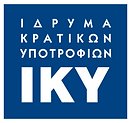Sustainable Diets
Dear students,
you will work according to this webquest.
The future of our planet hangs in the balance, and guess what? It's partly on your plate!
Today, you're not act just as students, you're transforming into Sustainable Diet Specialists. Buckle up for an interactive seminar that will equip you with the knowledge to become champions for healthy eating and environmental well-being.
"Sustainable Healthy Diets are dietary patterns that promote all dimensions of individuals’ health and wellbeing; have low environmental pressure and impact; are accessible, affordable, safe and equitable; and are culturally acceptable. The aims of Sustainable Healthy Diets are to achieve optimal growth and development of all individuals and support functioning and physical, mental, and social wellbeing at all life stages for present and future generations; contribute to preventing all forms of malnutrition (i.e. undernutrition, micronutrient deficiency, overweight and obesity); reduce the risk of diet-related NCDs; and support the preservation of biodiversity and planetary health. Sustainable healthy diets must combine all the dimensions of sustainability to avoid unintended consequences."
SUSTAINABLE HEALTHY DIETS GUIDING PRINCIPLES - Food and Agriculture Organization (FAO)
With these in mind, let's the ''Forking the Future'' Challenge begins!!
Your Challenge:
Imagine you've been invited to deliver a groundbreaking seminar at the prestigious "Forking the Future" Food Summit.
Your audience? A room filled with passionate Eco-Eaters eager to learn how their food choices can impact the planet.
Our role as teachers? To equip and support you on how to prepare a visually engaging presentation bursting with facts, figures, and interactive elements!!! You will be divided in 4 transnational teams. A scientiffic commitee aparted by a literature teacher, an English teacher, a nutritionist and an agronomist will make a crisis and will provide a constructive feedback to each team. The presentation that meets the most points in the rubric given in the evaluation submenu, will be sent as an example of product with this WebQuest to an educational conference as a paper.
Select a team and a role in the following Google Doc, where you will also find your responsibilities:
https://docs.google.com/document/d/1MSevN-wNpZytL5l0x0HTthtQdkJ3HFeEz1jQ7SFkgkg/edit?usp=sharing
Please do not forget to add the URL of your presentation!!
-
The basics of crafting a captivating presentation
Presentations don't have to be boring! Here's a recipe to whip up a presentation that will grab your audience's attention and keep them engaged:
-
Start Strong: Hook them from the beginning! Use a powerful opening statement, an interesting anecdote, or even a thought-provoking question to set the stage.Start with a fun activity! Ask participants to brainstorm their current eating habits and the environmental impact they might have.
-
Visual Appeal: Ditch the text overload! Incorporate clear, visually appealing slides with impactful images, interactive charts, infographics, and concise text points. Think infographics with data regarding comparison of sustainable data, captivating videos, and maybe even a "Sustainable Shopping Quiz!"
-
Storytelling Power: Weave a narrative! Frame your information as a story with a clear beginning, middle, and end. Use relatable examples, tips and strategies for making sustainable choices in their everyday lives,and case studies (as the case of Mediterranean diet as a sustainable diet pattern) to illustrate your points.
-
Variety is the Spice of Life! Don't just talk. Vary your delivery style with pauses for emphasis, vocal variety, and even interactive elements like polls or Q&A sessions.
-
Passion is Contagious! Be enthusiastic about your topic! Your genuine passion can ignite interest and keep your audience engaged. Think Outside the Lunchbox: Use a supermarket simulation game (online or paper-based) to showcase how choices like local produce and reduced packaging can make a difference.
-
Bonus Tip: Know your audience: Wrap up by encouraging them to share their sustainable eating goals and pledge to make a conscious difference.
Practice Makes Perfect: Rehearse your presentation beforehand. This will help you refine your timing, delivery, and ensure a smooth flow of information.
2. Sustainable diets research
Make use of the guide of FAO https://www.fao.org/3/ca6640en/ca6640en.pdf
You can also search to the web, and make use of those useful links
https://www.bda.uk.com/food-health/your-health/sustainable-diets.html
https://www.ncbi.nlm.nih.gov/pmc/articles/PMC9346614/
https://www.sciencedirect.com/science/article/pii/S0921800923000812
Food and Climate Change: Healthy diets for a healthier planet
https://interactive.carbonbrief.org/what-is-the-climate-impact-of-eating-meat-and-dairy/
https://www.carbonbrief.org/webinar-do-we-need-to-stop-eating-meat-and-dairy-to-tackle-climate-change/ details of a Webinar hosted by Carbon Brief: Do we need to stop eating meat and dairy to tackle climate change?
https://www.fao.org/gift-individual-food-consumption/data/en:The map provides information on known individual quantitative food consumption data worldwide.
https://www.ecomatcher.com/the-environmental-impacts-of-food-and-diet/
https://www.sciencedirect.com/science/article/pii/S0959652622043542
https://www.ncbi.nlm.nih.gov/pmc/articles/PMC5105037/
https://www.bbc.com/news/science-environment-46459714
KEEP NOTES FOR YOUR PRESENTATION based to the following content stucture:
Introduction: Start with a hook to grab attention. This could be a surprising fact, a question, a quote, or a brief story.
Body: Organize the main points logically. Use headings, subheadings, and bullet points to break down information. Ensure each point flows naturally to the next.
Conclusion: Summarize the key points and leave a strong final impression. Include a call to action if applicable.
3. Web2.0 tools
You can utilize tools like Google Slides or Canva or Genial.ly or any other you prefer and offer templates and design elements to enhance your slides in a collaborative way.
For other interactive elements you may want to add in your presentation, such as polls, votings, ideas, brainstorming, etc, please check the Web2.00 tools page on the Twinspace of the project.
If you feel anxious regarding the public speaking, you can take a look at TED Talks, as there are provided valuable tips and examples of effective presentations.
Upload your presentations to the following padlet:
https://padlet.com/meddiet4health/the-forking-the-future-challenge-1w66eybsh7tkz0cq





